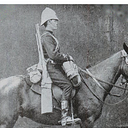France And Slaves
France played a leading role in the slave trade, buying millions of slaves in its African colonies
More than a century since its abolition, the slave trade is still an issue among both its victims and its perpetrators.
Until this practice — the procuring, transporting, and selling of human beings as slaves, in particular the former trade in black Africans as slaves by European countries and North America — was abolished by French colonies in 1848, France played a leading role in the slave trade, buying millions of slaves in its African colonies.
“From 1628 to 1642, French sailors captured slaves on foreign slave ships and brought them into the French colonies.
“French settlers also bought slaves from foreign slave ships,” Frederic Regent, a historian at Paris’ Sorbonne, told Enjeux magazine in 2008.
The slave trade was legalized by King Louis XIII in 1642, and his successor Louis XIV encouraged the slave trade “by giving a subsidy for each slave introduced into the colonies in 1672,” added Regent.
Based on extensive research, French historian Jean Metta's found that France had carried out 3,317 slave shipments, from 17 of its seaports, including Nantes, Le Havre, La Rochelle, and Bordeaux.
“About 1,800 shipments are from Nantes. For the 18th century alone, Nantes ships transported between 450,000 and 600,000 Africans to the European colonies in new worlds,” meaning the Americas, according to Jean-Francois Martin, a reporter from for Ouest-France daily.
“The French slave ships, from the ports of Nantes, Bordeaux, La Rochelle or Le Havre, transported more than 2 million Africans from 1625 to 1848,” CM98, an Antillean anti-slavery group, said on its website.
Long, humiliating journey of ‘no return’
Slaves were transported by African slave traders to the coast where they were routed from boarding ports, known as gates of no return, to their host countries.
In his book The History of the Slave Trade in France, French historian Jean-Marie Desport detailed the humiliating conditions in which the slaves were transported.
“Here is the slave ship. The captives are released from their bonds. They climb a rope ladder bridge. The men are sent to the front of the ship, the women are pushed towards the lower deck.
“The smell is unbearable: a mixture of perspiration, excrement, vomit and putrefaction. It will have to be done. In one to two months, if they survive the privations, the torture, the diseases, and the madness … they will land on the other side of the Atlantic,” Desport explained.
Economic motivations
The main reason for this practice seems rather be economic, although France justified the practice by saying it was a necessity to save “the black man” from ignorance.
“It needed a large and resistant workforce to produce sugar cane, coffee, cotton, tobacco, indigo … all the colonial products that enriched Europe for a long time,”
“With the money collected, the slave traders buy the products of the Caribbean plantations (sugar, indigo, cocoa, coffee, precious stones) to bring them back to France,” said Desport.
Although it is difficult to give definite figures on what the slave trade brought to France, Desport said that “the only certainty is that, thanks to its colonies, the kingdom of France became, in the eighteenth century, the world’s largest exporter of sugar, coffee and cotton”.
Desport insists that “thanks to the work of slaves, France has become part of the world’s economic hub, becoming, until today, a leading commercial power.
Times have certainly changed, but Africa, the main victim of the slave trade, continues to bear the cultural and psychological effects of the trade.
For over 400 years, more than 15 million men, women, and children were the victims of the tragic transatlantic slave trade, one of the darkest chapters in human history, according to the UN.
However, we have to remember that the Africans themselves were trading slaves to all the European slavers https://graham100200.medium.com/african-slave-owners-ea03fffd6e28
